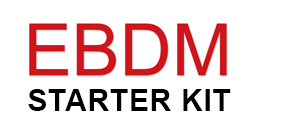EBDM Starter Kit
3c: Creating a Resource Inventory
Navigating the Roadmap

Activity 3: Understand current practice within each agency and across the system.
Introduction
In addition to developing a system map and gathering information about the defendants/offenders in your system, conducting an assessment of the various services and resources available—within the criminal justice system, as well as from public sector entities in your community—will better inform your team’s policy and practice decisions.
Purpose
This Starter Kit is designed to provide instructions on how a jurisdiction might inventory and assess the resources available to defendants/offenders in their community and determine the strengths and best use of the current array of services, as well as gaps and overlaps in services.
Participants
Participants should include staff from the multiple criminal justice agencies represented on the policy team who are most knowledgeable about the resources, programs, and interventions available to offenders/defendants.
Instructions
- Conduct a brainstorming session to develop a list of all the resources in your jurisdiction currently available for defendants/offenders. Some of these resources will be within the criminal justice system (e.g., a life skills class offered by the probation department), some will be in other public sector agencies (e.g., a job training program in the county’s office of workforce development), and some will be in the private sector (e.g., specialized substance abuse or mental health treatment).
- Create a matrix to collect specific information about each resource and research each to gather pertinent information. At a minimum, identify the specific services available through each resource, including their admission and selection criteria, duration/length, capacity, the criminogenic needs that the program addresses, and a rating (such as one from the CPC, CPAI, or a similar entity). You may also provide a brief description of the service. See Appendix 1 for a template of such a matrix.
- Compile your findings into a report or chart after the resource inventory is complete. Review the findings with your team to assess the resource inventory for completeness and to identify the strengths in your current array of services, as well as overlaps and gaps. Use this as an opportunity to consider ways to improve upon this array. For instance, should resources be shifted from one service area where there is an excess in service (e.g., where resources are devoted to non-criminogenic needs) to other areas where there are gaps? Appendix 2 provides a list of criminogenic needs and considerations around dosage, intensity, and duration of programming by risk level for adult offenders.
- Consider developing a directory of your resources so you can share this information with pertinent stakeholders in your jurisdiction (e.g., probation officers, prosecutors, defenders, judges).
Example
Yamhill County, Oregon, Correctional Programming Options (Abbreviated version of full document)
Additional Resources and Readings
CSOM. (2007). Section three: An overview of the steps in the planning and implementation process. Enhancing the management of adult and juvenile sex offenders: A handbook for policymakers and practitioners (pp. 29–56). Retrieved from http://www.csom.org/pubs/csom_handbook.pdf
McGarry, P., & Ney, B. (2006). Getting it right: Collaborative problem solving for criminal justice. (NIC Accession No. 019834). Retrieved from http://nicic.gov/Downloads/PDF/Library/019834.pdf
Appendix 1
Resource Inventory Matrix Template
Appendix 2
Risk and Criminogenic Need Considerations
PDF/Printer Friendly Version of Section

